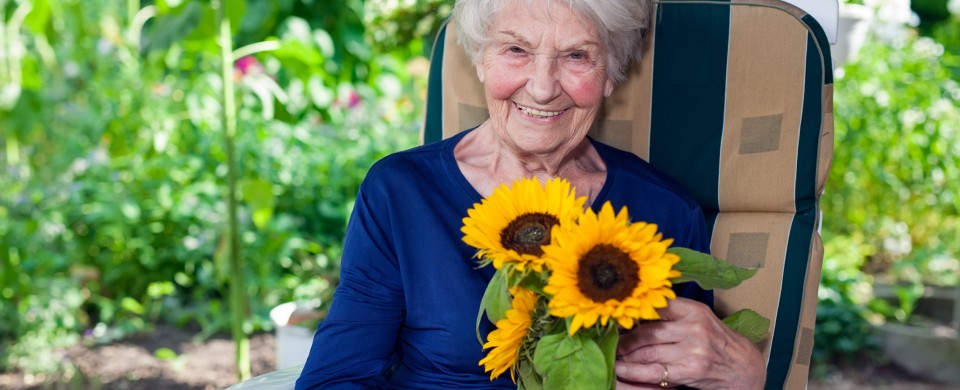Jacqueline M. is a pleasant lady who was 81 years old when she first came to see us in late 2013. She had constant, severe pain in her left knee that prevented her from doing most of her activities of daily living. She was unable to enjoy one of her favorite hobbies: gardening. She had physical therapy and injections of corticosteroids with little relief of her pain. She went to see an orthopedic surgeon who recommended replacement surgery for her knee.
Jacqueline came to see us to see what we could do for her knee. She knew that undergoing knee replacement surgery entailed a long recovery period, and she knew it would tax her aging body, and that she could end up with significant residual pain after going through all that. She had x-rays of her knee that showed she had a Kellgren Grade 4 osteoarthritis. The Kellgren-Lawrence scale is a way doctors use to grade severity of knee osteoarthritis. Joints are graded based on x-ray findings as grade 0 (no arthritis), grade 1 (mild arthritis), grade 2 (moderate arthritis) and grade 3 and 4 (severe arthritis). Jacqueline’s knees showed severe arthritis with very little joint space (bone on bone) and deformities of the bones. Jacqueline’s function was also severely limited. She scored a 34 in the Lysholm Knee Scoring Scale. This is a scale that measure function in patients with knee problems. It goes from 0-100 with the higher scores meaning more function. This scale is commonly used in the orthopedic literature. It has been extensively validated, and we use it to monitor the progress of our patients and the effectiveness of our treatments. A score of 34 is a very low score, well below the average for our patients before treatment. Despite her age, and advanced stage of her arthritis, we advised Jacqueline that our stem cell procedure would likely help her decrease the pain and increase her function. Patient agreed and we performed our RegenaJoint stem cell treatment protocol on her left knee.
Jacqueline showed phenomenal improvement after the treatment. Two months following the initial injection her pain had improved by 75% (from an 8 in a 0-10 pain scale to a 2) and her function had improved as well. She had ditched her cane, she was able to walk longer distances with minimal pain. She was able to go up and down stairs and had no instability of her knee. She scored a 77 in her Lysholm function scale. Like many of our patients, Jacqueline continued to improve for the next several months. At one year post procedure, her pain level was still a 2/10, but her Lysholm score went up to 81.
Jacqueline recently came to visit us. It has been almost 2 years since her initial treatment and she has continued to do very well. She rates her pain at 1/10 and her Lysholm function score is still an 81. She is enjoying gardening and is able to do all of her activities of daily living with little or no pain (in her left knee at least). She is perfect example of something we have noticed by monitoring the progress of our patients for one year or longer: even patients of advanced age do well; and severity of disease (at least based on radiographic findings) does not correlate with results, meaning that patients with severe arthritis (Kellgren 3 and 4) seem to do as well as those with moderate arthritis (Kellgren 2). Also, patients who do well continue to do well for a long time after the procedure.
We wish Jacqueline many more years of reduced pain and improved function!
To learn more about non-surgical alternatives to joint surgeries go to: www.dontoperate.com.

